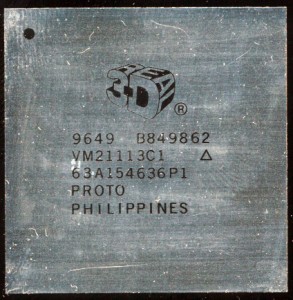Real3D – From Tank Simulators to Graphics Cards
Much of consumer tech starts life in the labs of defense companies. The reasons of course are simple, defense projects demand high tech, and are paid high prices by their respective governments. Usually this tech is eventually spun off or licensed to consumer companies. Occasionally, however, a defense company will commercialize a product on their own. Thus was the case of Real3D.
Real3D has its roots in GE Aerospace. GE needed to make simulators, with graphics good enough to be useful for training for a variety of systems. Their first system was a docking simulator for the Apollo Project in the 1960’s. By the 1980’s the technology had evolved into graphics systems for other simulators, notably the M1 Tank. This simulator used texture mapping graphics, which was in the world of sprites commonly used on PC’s was rather high tech. In 1992 GE sold the GE Aerospace division to Martin-Marietta who then merged with Lockheed. Lockheed Martin wanted to commercialize the graphics work GE Aerospace has developed and thus formed Real3D Inc. in 1995. Real3D’s first commercial success was the graphics work on the Sega Model 2 (Real3D/100) and 3 (Pro-1000) arcade systems. Real3D also began working with SGI and Intel on a PC based graphic solution to take advantage of the new AGP bus. This was known as the Starfighter, and later as the rather infamous Intel i740, its performance was not particularly good, but it was what Intel wanted for their entry into the value graphics market. Real3D also had the Pro-1000 whose performance was much better but it never made it out of the development stage.
In 1999 Lockheed closed Real3D and sold its assets (mainly IP) to Intel. The i740 was withdrawn from the market in 1999 as well, but its technology, and that of Real3D continued to be used by Intel in their integrated graphics chipsets (notably the i810 and i815), surviving still to this day. While no competitor to AMD/Nvidia Graphics it still is enough for most computing.


